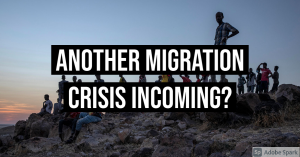Shoebat.com has been watching the conflict in Tigray in northern Ethiopia on the Egyptian-Eritrean-Sudanese border region noting that while it cannot be definitively proven, that it may be a conflict instigated by outside political actors because of Ethiopia’s history in African geopolitics and in particular with the wars between Russia and NATO.
According to the Financial Times, the Ethiopian military is now moving into the capitol of Tigray, effectively ending the rebellion.
Ethiopia’s military took control of the capital of the rebel region of Tigray on Saturday, ending the “final phase” of a month-long armed conflict, prime minister Abiy Ahmed said.
Since November 3, the national government has been engaged in a military offensive against the northern region, which is led by the Tigray People’s Liberation Front, or TPLF.
Mr Abiy said the armed forces have taken over the capital Mekelle and that rebel “criminals” will be arrested and tried.
“I am pleased to share that we have completed and ceased military operations in the Tigray region,” Mr Abiy said.
“Our focus now will be on rebuilding the region and providing humanitarian assistance while federal police apprehend the TPLF clique”.
Information from the front lines has been tightly controlled after the government cut most telecommunications services, with both sides engaging in a war of words. Foreign diplomats in Addis Ababa believe hundreds, probably thousands, have died since the conflict began when the TPLF said it attacked a federal army command station in Mekelle.…
Over 40,000 Ethiopian refugees have already fled across the border into neighbouring Sudan, with the United Nations fearing the number could double in the coming months if fighting continues. Senior Sudanese officials said that their state is ill-equipped to cope with such an influx of people.
The Ethiopian government calls the military action against the TPLF, which runs Tigray and dominated national politics until 2018, a law enforcement operation. The TPLF has been accused of massacring hundreds of civilians, although it has denied fomenting ethnic violence.
“What the TPLF clique did isn’t just a nuisance. It’s treasonous,” said Redwan Hussein, spokesman for the State of Emergency Task Force for the Tigray Crisis.
He accused the group of launching rockets, and slaughtering nearly 700 non-Tigrayan civilians.
Even with the army taking the city of Mekelle, western officials in Addis Ababa as well as Tigrayan observers warned that the national government could struggle to regain full control of the region, which is home to 5m of the country’s 110m people. “This only marks the start of another long insurgency in Tigray against Ethiopia, which will be fought not for regional autonomy, but for complete independence,” tweeted Alemayehu Weldemariam, an analyst on security and democracy in the Horn of Africa. (source)
What happens after is yet to be seen. However, given that major conflicts in Africa have sparked trends for migration and fleeing to Europe, there is a possibility that this Tigray conflict, like what is happening in Burkina Faso with a horrible conflict causing upheaval in Mali and the Sahel region, may help to bring about, like at the end of 2015 leading into 2016, a major refugee crisis to Europe, remembering that one of the main sources of migrants to Europe during that wave was from Tigray’s bordering national neighbor of Eritrea. After all, given the miserable track record of human rights abuses that Sudan has, and how people will flee for a better life, the conditions for a repeat of 2015 and 2016 potentially exist here. What is to be see is if an actual migration wave will form or not, and where that wave will be allowed passage to, for if German “opens her borders” once again, the trend of nationalism and growing militarism already started will become more intense than before and in combination with the German economic situation may turn Germany’s future into one that looks a lot like the 1930s.



